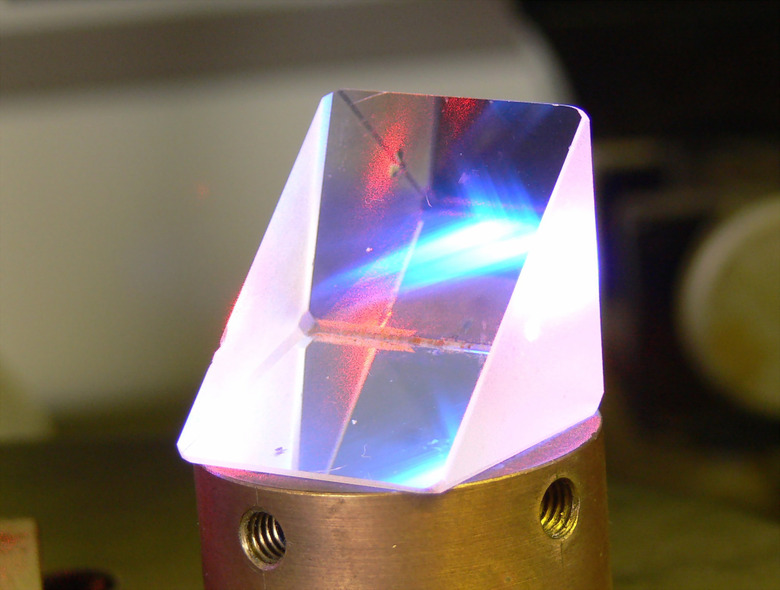Light Spectrum Explained For Kids
Rainbows, sunsets and candles flickering in the dark illustrate the ability of the spectrum to shape the world around you. NASA defines the spectrum as "the range of all EM radiation." EM stands for electromagnetic — a term that describes light you can see and radiation you can't. The science behind the light spectrum may not be simple, but it's still possible to teach kids how it affects everything from radio transmissions to microwaves.
Bring on the Colors
Bring on the Colors
People once believed that colors resulted from mixing darkness and light. One day, Sir Isaac Newton proved them wrong by performing a famous experiment. When he let sunlight shine through one side of a prism, colors of the rainbow came out of the other end. This experiment verified that ordinary light actually consists of colors that make up the visible part of the spectrum. Explain this to children and allow them to experience Newton's discovery firsthand with their own prisms.
Learning the Spectrum
Learning the Spectrum
Show kids how they can learn the colors of the spectrum by remembering the name Roy G Biv. Its letters stand for red, orange, yellow, green, blue, indigo and violet. Ask them to examine a rainbow and note how see the spectrum's colors appear in the order listed in the Roy G Biv name. Explain how the visible spectrum's colors always appear in that order, whether they reside in rainbows or emerge from the side of a prism. Tell them how each color possesses a specific amount of energy, with red possessing the least and violet the most.
Light Beyond Your Vision
Light Beyond Your Vision
Scientist William Hershel noted that different colored filters seemed to pass different amounts of heat when sunlight was directed through them. As an experiment, he let sunlight pass through a prism to produce colors of the spectrum. He then measured the temperature of each color and found that temperatures increased from the violet end of the spectrum to the red end. A surprise came when he checked a region beyond the red color, where there was no sunlight, and found that it had the warmest temperature all. That region consisted of invisible electromagnetic radiation that Herschel called "calorific rays." Scientists later renamed this "infrared."
EM: All Around You
EM: All Around You
Electromagnetic radiation gets its name from the fact that it's made up of waves of magnetic and electrical fields that vibrate. These waves have different energy levels and other properties kids can learn about. Other forms of invisible EM include gamma rays, microwaves and radio waves. Johann Ritter discovered high-energy ultraviolet radiation that lies beyond violet light on the spectrum. Interestingly, while humans cannot see this light, bees and some other organisms can.
The Spectrum in Daily Life
The Spectrum in Daily Life
Infrared radiation has many uses, ranging from cameras that help the military and police to methods of monitoring pollution and analyzing body tissues in medical treatment. Ultraviolet radiation from the sun causes cellular damage, sunburn and other unwanted side effects. Explain that other types of EM, such as radio waves and microwaves, make it possible for kids to enjoy their favorite tunes and warm up a slice of pizza quickly.
Cite This Article
MLA
Lee, Kevin. "Light Spectrum Explained For Kids" sciencing.com, https://www.sciencing.com/light-spectrum-explained-kids-6319072/. 24 April 2017.
APA
Lee, Kevin. (2017, April 24). Light Spectrum Explained For Kids. sciencing.com. Retrieved from https://www.sciencing.com/light-spectrum-explained-kids-6319072/
Chicago
Lee, Kevin. Light Spectrum Explained For Kids last modified March 24, 2022. https://www.sciencing.com/light-spectrum-explained-kids-6319072/
